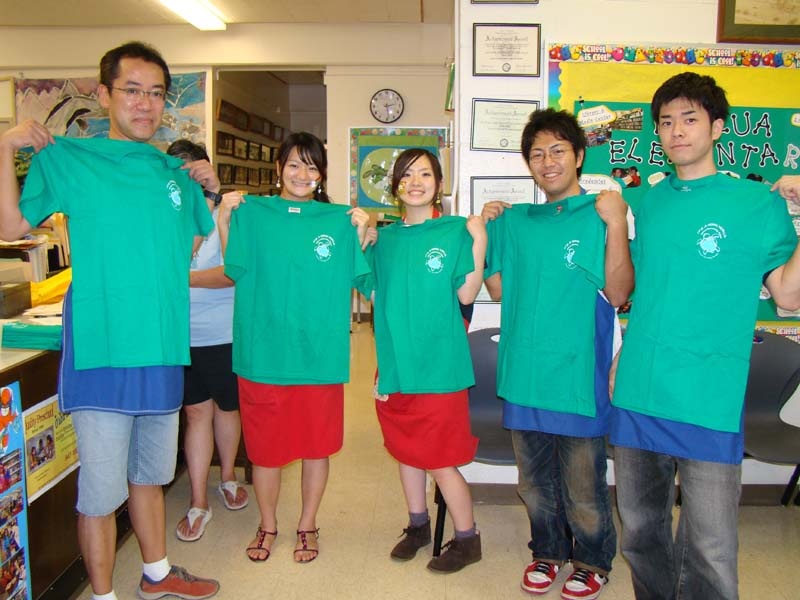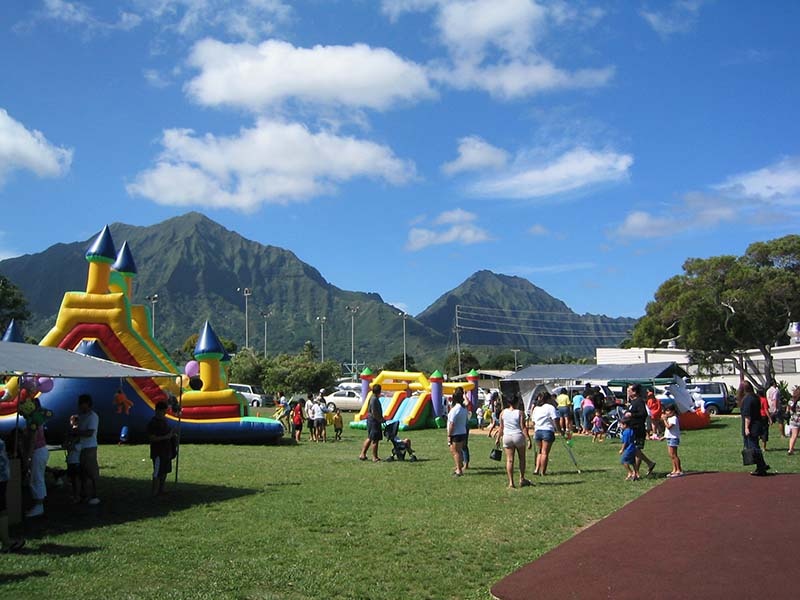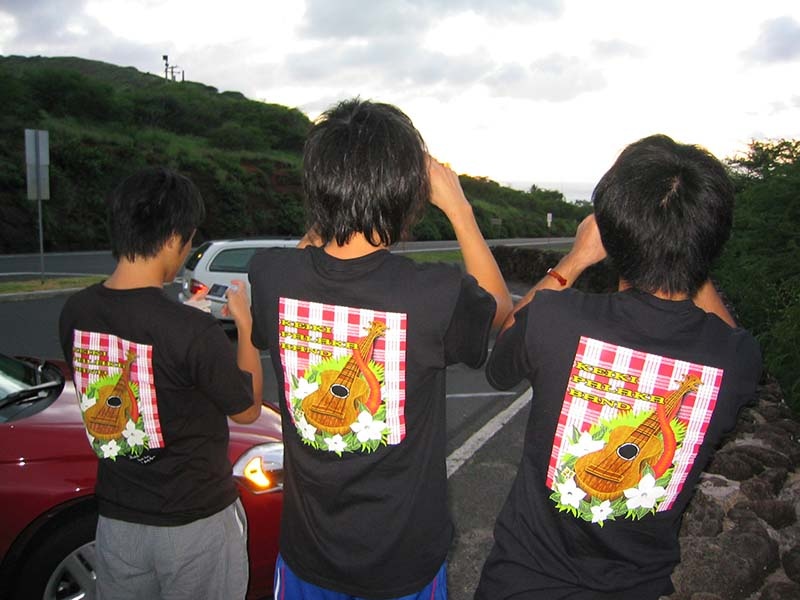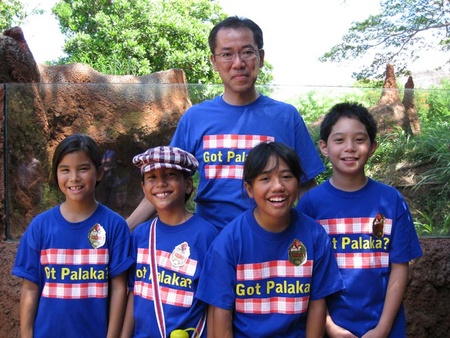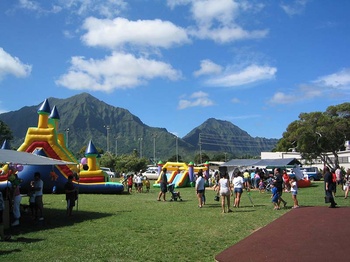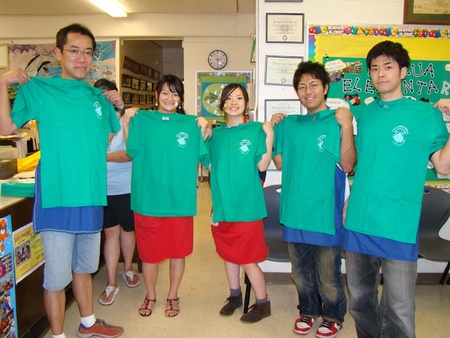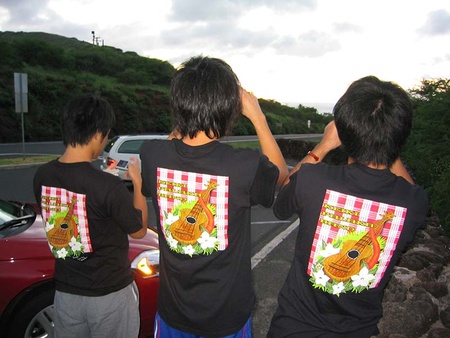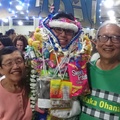If we think of the letter "T" in the alphabet, it is of course a "T-shirt." In fashion magazines, it is even expressed as a "T" as it is. My father, who is in his 70s, does not wear T-shirts, and of course my grandfather, who would be nearly 110 years old if he were alive, would not wear one either. What they wear is an undershirt that is similar in shape to a T-shirt, but has a crew neck that opens up to the upper chest.
The T-shirts we are talking about today are thought to have been used as everyday clothing in Japan by the generation below, and have become established as convenient casual wear that can be worn both as outerwear and innerwear. There is probably no other clothing item that has spread so far around the world and has so many colors and designs. Personally, I like T-shirts with a "back print" design, where the print is on the back rather than the chest. I think it suits my personality better to carry some kind of message or a sense of belonging on my back, rather than expressing something on the front of my body.
Since I work at a university, I often see various T-shirts being designed and used by school sports clubs and circles. I have made T-shirts several times during my student days as a member of the sports club I belonged to. However, when I started to go to Hawaii, I was overwhelmed by the variety and number of T-shirts. When I'm in Hawaii, I sometimes wear aloha shirts when going out to dinner, but other than those occasions when I need to be a little formal, I always wear T-shirts.
In Hawaii, everyone wears T-shirts, regardless of age or gender. There are no distinctive colors for different generations or genders. Even older men wear red or pink T-shirts, and it doesn't look strange, and it even looks cool. Everyone wears a variety of colors. The idea that men wear blue and women wear red is a stereotype that Japanese people have arbitrarily held.
I have been attending elementary schools in Hawaii several times a year for the past 20 years or so. During that time, I have lived there twice and had the opportunity to observe the local area closely. There are many Japanese-American teachers at Hawaiian elementary schools. It is said that the Chinese who arrived in Hawaii first left their jobs working on sugarcane plantations and moved to the city, where they entered the business world. Japanese and Japanese-Americans who arrived later have supported the education sector. When I went to local elementary schools for research, I felt a sense of closeness to the many Japanese-American teachers working there, which was a great psychological help.
At the local elementary school, I continued to observe classes and tried to participate in events. Before long, I was invited to every school event, especially to an event called Fund Raiser. When I first heard the name "Fund Raiser," I thought it was some grand event, so I dressed up in an aloha shirt and put on leather shoes and went out. The school was bustling with something like a cultural festival, but there were no meetings anywhere. When I asked what it was, I found out that the event was to sell plants that the children had grown, crafts, juice, sweets, etc., to make a profit and use it to add to the school's operating funds. There was even a colorful hut inflated by a large fan, and the young children were jumping around and cheering. There was also a coffee cup that several people could ride on and spin around in. Since there are no amusement parks in Hawaii, these events seem to be a substitute for them.
I walked around the store in a formal outfit. I found some T-shirts among the items on sale, but they were so much cheaper than those sold at T-shirt shops in the city that I wondered if they could really make a profit. They had the school's name printed on them and were well designed. I bought a few to show my support for the school, and also bought some sandals, which made me feel much more casual. Wearing the T-shirts with the school's name on them, I strangely felt like I had developed a sense of belonging to the school. T-shirts with the school's name on them can also be purchased at educational materials shops in downtown Honolulu.
Until about two years ago, Mr. and Mrs. M, a Japanese-American couple, led an elementary school ukulele band. They prepared stylish T-shirts with the band's name on them for not only the children but also their parents, the band's supporters, and even for me, who had just joined the band as a supporter. Every time they made a new design, they included me in the number. When the children performed, everyone wore the T-shirt and helped out backstage. That was one of the joys of my stay in Hawaii.
One of the couple's friends is Ms. A, who is currently the vice principal of an elementary school. She is also a third-generation Japanese American. She is a veteran teacher who was once named the best teacher in the United States, and there are several dozen teachers who want to transfer to work in education with her, and they have been waiting for a position to open up for years. The school is located right next to her home, about a three-minute drive away. It is said to be the first place Japanese immigrants settled on Oahu, and it was once a bustling area with sugar cane cultivation.
It must have been about 10 years ago that all the students at this elementary school started wearing school T-shirts all day. Before that, they came to school in a variety of casual clothes, but now every single student wears a school T-shirt.
When teacher A arrives at work, she and her cousin teacher C start washing clothes for homeless children. Hawaii is often called a "paradise on earth," but because it is a "paradise," homeless people rarely have to worry about being cold. Many homeless people live in parks and on beaches. Children come to school from their homes, living in their cars or under tents.
The children are forced to take off their dirty shirts and change into school T-shirts. Their shirts are dry by the time they leave school. They change again when they leave school. Teachers A and C then wash the school T-shirts after school. They are dry by the next morning.
It is important to make sure that homeless children do not feel miserable, but even before that, it is extremely important to ensure that children have a hygienic school life. The T-shirts not only foster a sense of belonging to the school, but also fulfill that role.
© 2014 Seiji Kawasaki


